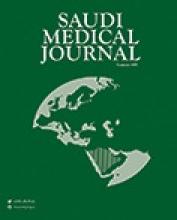Abstract
OBJECTIVE: To assess the current status of protein energy malnutrition (PEM) in the high and low altitude preschool children aged 12-71 months.
METHODS: A cross-sectional study conducted during the year of 2003 and involved 572 and 469 preschool children of Southwestern Saudi Arabia born and living permanently at high and low altitude areas. Anthropometric measurements were carried out to assess the prevalence of PEM using 3 indicators such as underweight, wasting and stunting following World Health Organization standards. Prevalence differences were examined by age, gender, altitude, and parental socioeconomic status.
RESULTS: The prevalence of the 3 types of PEM was significantly higher at low altitude than at high altitude and significantly higher among children born to illiterate than to educated parents. Older children were more underweight and stunted than younger children and underweight and wasting were significantly more common in boys than girls. Annual family income per person was negatively and significantly associated with underweight and stunting, but not with wasting. Multivariate analysis showed that after controlling for all sociobiological factors, low altitude remained a strong risk factor.
CONCLUSION: The difference in PEM between high and low altitude preschool children could be related to the milder environmental conditions at high altitude and the higher incidence of tropical infections in lowland children. Future studies are required to verify these speculations, and to establish programs to control and prevent PEM in preschool children at low altitude.
- Copyright: © Saudi Medical Journal
This is an open-access article distributed under the terms of the Creative Commons Attribution-Noncommercial-Share Alike 3.0 Unported, which permits unrestricted use, distribution, and reproduction in any medium, provided the original work is properly cited.






